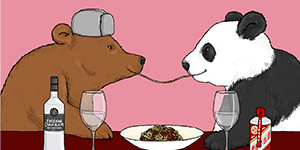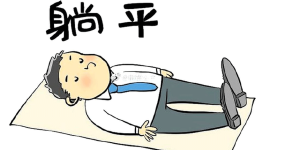Art and China After 1989 Theater of the World3
Art and China after 1989: Theater of the World
Art and Communist china later on 1989: Theater of the World is a major exhibition of contemporary fine art from China spanning 1989 to 2008, arguably the most transformative period of mod Chinese and recent earth history. (Exhibition dates: October half dozen, 2017 - January 7, 2018)
Where
Art and Communist china after 1989: Theater of the World is a major exhibition of contemporary art from China spanning 1989 to 2008, arguably the virtually transformative period of modern Chinese and recent world history. The largest testify of this subject ever mounted in North America, it offers an interpretative survey of Chinese experimental fine art framed by the geopolitical dynamics attending the stop of the Cold State of war, the spread of globalization, and the rise of People's republic of china. The arc of this international history, beginning with the crushed utopianism of the nationwide commonwealth movement and culminating in the conflicted euphoria surrounding the Beijing Olympics, provides the framework for the Guggenheim'south show. Theater of the World examines how Chinese artists have been both agents and skeptics of China's arrival as a global presence, and seeks to reposition a Sinocentric art history in a fashion that sees China as integral to the emergence of the global contemporary.
The exhibition title comes from a major installation in the show by Huang Yong Ping. Within a caged arena shaped similar a mythological tortoise, hundreds of live reptiles and insects devour each other over the course of the testify. Teeming with life and littered with carcasses, this gritty scene brings the viewer into an immediate come across with the fierce yet matter-of-fact play of powerful forces over weaker ones. Huang's visual brutality foreshadows an underlying sense of visceral realism and realpolitik that is present in much of the most interesting work of this period.
Opening at the Solomon R. Guggenheim Museum in October 2017, the exhibition is divided into six chronological and thematic sections installed in the rotunda and two tower galleries. Theater of the World includes contributions by more than than 70 artists and collectives, and features some 150 iconic and lesser-known works on loan from private and public collections around the world. These works employ a vast range of experimental mediums, including motion-picture show and video, ink, installation, Land art, functioning, also as painting and photography. The show also presents documentary footage of of import avant-garde exhibitions together with other archival materials highlighting key moments and movements in this contested history.
Fine art and Prc afterwards 1989: Theater of the World is organized past Alexandra Munroe, Samsung Senior Curator, Asian Fine art, and Senior Counselor, Global Arts, at the Guggenheim, and Philip Tinari, Director of the Ullens Center for Gimmicky Art, Beijing, with consulting curator Hou Hanru, Creative Director of MAXXI, National Museum of the 21st Century Arts, Rome. At the Guggenheim, Xiaorui Zhu-Nowell, Curatorial Banana, Asian Art, and Kyung An, Assistant Curator, Asian Fine art, have provided research and organizational support. Archival research has been developed in collaboration with Asia Art Archive, Hong Kong. The curators are working with an international informational committee that has met under the auspices of the Communist china University of Fine art, Hangzhou. The exhibition will be accompanied by a 300-page scholarly catalogue and a range of integrated digital resource.
The Leadership Committee for this exhibition is gratefully acknowledged for its generous back up, with special cheers to Co-Chairs Thomas and Lynn Ou and Liam Wee Tay and Cindy Chua-Tay, Trustee, besides as Karen Lo, Sophia Ma, Jane Yong, and those who wish to remain anonymous.
Art and China after 1989: Theater of the Earth has been made possible in part by a major grant from the National Endowment for the Humanities.
Funding is also provided past the W.L.S. Spencer Foundation and the Due east. Rhodes and Leona B. Carpenter Foundation.
Price:
Free with Museum Admission
Featured Manufactures

Shifting priorities for Prc and Europe
China has extensive and productive ties with many European nations, but the human relationship has been worsening in contempo years. The war in Ukraine has led to still more unease.

Lying flat or waiting for a meliorate deal?
The pandemic has young people (and non so immature people) in China and the U.S. rethinking their career and life aims. With international labor day and Cathay'due south youth day just around the corner, we look at trends in chore seeking and wages.
Events
Source: https://china.usc.edu/calendar/art-and-china-after-1989-theater-world
0 Response to "Art and China After 1989 Theater of the World3"
Post a Comment